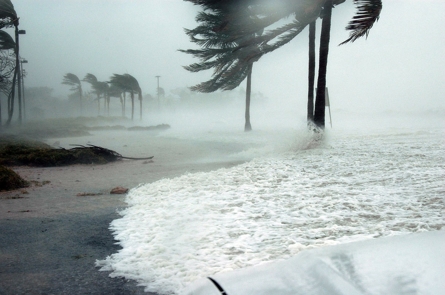The 2019 hurricane season is here! The National Hurricane Center explains that 97% of all hurricanes occur between June 1st and November 30th. Now that the 2019 hurricane season is in progress, it’s time brush up on your severe storm knowledge. Hurricanes are less likely at the beginning of the season but not impossible. Protect your home from water damage by preparing for this season before disaster strikes.
How to Prepare
Prepare early for hurricane season. Start by creating an emergency kit including water, food, extra batteries for a radio and any other necessities you may need for a few days. Make sure you sign up for your local emergency alert system. The weather forecast is a great resource but when it comes to a hurricane, the sooner you know the better. Another preparation that can save a lot of time is to create a plan. This plan should contain a safe meeting place, evacuation routes and the location of your emergency kit. The less you have to think when an emergency occurs the faster you can act. Don’t forget about your important documents. Store the originals in an airtight container on a high shelf and create digital copies that are accessible from anywhere.
What to Expect
Many hurricane predictions for this year are average. According to the National Oceanic and Atmospheric Administration, “This outlook forecasts a 40% chance of a near-normal season, a 30% chance of an above-normal season and a 30% chance of a below-normal season.” In other words, this year we shouldn’t see an abnormal number of hurricanes. However, the normal 4-8 can still cause damage. Now that hurricane season is underway, the best way to avoid damage is to understand your risks and prepare before disaster strikes.
Hurricane Facts
A hurricane is made up of many conditions coming together to create the perfect storm. The National Weather Service writes that the following six conditions create hurricanes.
- Ocean temperatures need to be above 79 degrees Fahrenheit.
- Hurricanes can only occur in areas that are at least five degrees latitude away from the equator.
- Heat needs to be produced near the center of the hurricane due to the condensation of water vapor. This is called a saturated lapse rate.
- Wind speed needs to drop with height. High winds that are strong can destroy storms.
- High humidity is needed through multiple layers of the atmosphere.
- If a thunderstorm encounters the conditions mentioned above, it will turn into a tropical storm or hurricane.
Storm Surges
Hurricanes often cause large waves called storm surges. These large waves crash into coastlines, destroying infrastructures like homes, offices, harbors and highways. Even the sturdiest structures have a tough time withstanding powerful waves in addition to high winds and flooding.
High Winds
Winds ranging from 74 to over 157 miles per hour accompany hurricanes. Not only can these winds cause damage by flipping over cars and ripping off siding from your home, but they can also carry debris long distances. These flying missiles are a safety concern all on their own. That’s why it’s important to take shelter during hurricanes.
Flooding
Large amounts of rain in a short period of time is a recipe for flash flooding. This type of flooding is especially dangerous because you don’t have time to prepare. Long-term flooding is also common usually around rivers.
ServiceMaster Restoration Services in the South Atlantic is your local damage restoration experts. If you experience water damage this hurricane season, contact us.


